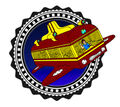Template:Selected anniversaries/August 30: Difference between revisions
No edit summary |
No edit summary |
||
| Line 1: | Line 1: | ||
<gallery> | <gallery> | ||
||Johann Hieronymus Schröter | ||1745: Johann Hieronymus Schröter born ... astronomer. | ||
||1751 | ||1751: Christopher Polhem dies ... physicist and engineer. | ||
File:Christopher Polhem painted by Johan Henrik Scheffel 1741.jpg|link=Christopher Polhem (nonfiction)|1661: Scientist, inventor, and industrialist [[Christopher Polhem (nonfiction)|Christopher Polhem]] dies. He made significant contributions to the economic and industrial development of Sweden, particularly mining. | File:Christopher Polhem painted by Johan Henrik Scheffel 1741.jpg|link=Christopher Polhem (nonfiction)|1661: Scientist, inventor, and industrialist [[Christopher Polhem (nonfiction)|Christopher Polhem]] dies. He made significant contributions to the economic and industrial development of Sweden, particularly mining. | ||
||Joseph Alfred Serret | ||1819: Joseph Alfred Serret born ... mathematician. He will be known for the Frenet–Serret formulas. Pic. | ||
||1831: Michael Faraday demonstrated the first electrical transformer. | |||
File:Francis Baily.jpg|link=Francis Baily (nonfiction)|1844: Astronomer [[Francis Baily (nonfiction)|Francis Baily]] dies. He observed "Baily's beads" during an annular eclipse (1836). | File:Francis Baily.jpg|link=Francis Baily (nonfiction)|1844: Astronomer [[Francis Baily (nonfiction)|Francis Baily]] dies. He observed "Baily's beads" during an annular eclipse (1836). | ||
||1852 | ||1852: Jacobus Henricus van 't Hoff born ... chemist and academic, Nobel Prize laureate ... first winner of the Nobel Prize in Chemistry. | ||
||1856 | ||1856: Carl David Tolmé Runge born ... mathematician, physicist, and spectroscopist. | ||
||1871 | ||1871: Ernest Rutherford born ... physicist and chemist, Nobel Prize laureate. | ||
File:Theodor Svedberg.jpg|link=Theodor Svedberg (nonfiction)|1884: Chemist and academic [[Theodor Svedberg (nonfiction)|Theodor Svedberg]] born. He will be awarded the 1926 Nobel Prize in Chemistry for his pioneering use of analytical ultracentrifugation to distinguish pure proteins from one another. | File:Theodor Svedberg.jpg|link=Theodor Svedberg (nonfiction)|1884: Chemist and academic [[Theodor Svedberg (nonfiction)|Theodor Svedberg]] born. He will be awarded the 1926 Nobel Prize in Chemistry for his pioneering use of analytical ultracentrifugation to distinguish pure proteins from one another. | ||
| Line 28: | Line 30: | ||
||1909: Burgess Shale fossils are discovered by Charles Doolittle Walcott. | ||1909: Burgess Shale fossils are discovered by Charles Doolittle Walcott. | ||
||1912 | ||1912: Edward Mills Purcell born ... physicist and academic, Nobel Prize laureate ... independent discovery (published 1946) of nuclear magnetic resonance in liquids and in solids. Nuclear magnetic resonance (NMR) has become widely used to study the molecular structure of pure materials and the composition of mixtures. | ||
||1918: Sergey Alexandrovich Afanasyev born ... engineer, space and defence industry executive, the first Minister of the Soviet-era Ministry of General Machine Building. | ||1918: Sergey Alexandrovich Afanasyev born ... engineer, space and defence industry executive, the first Minister of the Soviet-era Ministry of General Machine Building. | ||
Revision as of 11:33, 26 August 2018
1661: Scientist, inventor, and industrialist Christopher Polhem dies. He made significant contributions to the economic and industrial development of Sweden, particularly mining.
1844: Astronomer Francis Baily dies. He observed "Baily's beads" during an annular eclipse (1836).
1884: Chemist and academic Theodor Svedberg born. He will be awarded the 1926 Nobel Prize in Chemistry for his pioneering use of analytical ultracentrifugation to distinguish pure proteins from one another.
1905: Mathematician Emmy Noether uses Gnomon algorithm functions to detect and prevent crimes against mathematical constants.
1940: Physicist, academic, and Nobel laureate J. J. Thomson dies. His research in cathode rays led to the discovery of the electron. Thomson also discovered the first evidence for isotopes of a stable element.
1954: The Worcester Lunch Car Company's Research Division announces daily Flying Diner breakfast and dinner flights between San Francisco and New Minneapolis.
2013: Poet, playwright, translator, and lecturer Seamus Heaney dies. He received the 1995 Nobel Prize in Literature.
2017: Leonardo Draws Clock Head wins Newbery Award for Best Children's Book Cover of the Year.







